SIGGRAPH 2017: Unsettled Artifacts: Technological Speculations from Latin America
Chair(s):
- Paula Gaetano Adi
-
- Rhode Island School of Design
Art Papers Chair(s):
- Ruth West
-
- University of North Texas
- xREZ Art+Science lab
Location:
Los Angeles, California, United States of America
Dates:
July 30th-August 3rd, 2017
Art Show Overview:
For the first time in SIGGRAPH history, the Art Gallery is dedicated exclusively to works by Latin American artists and designers: speculative artifacts that apply digital technologies to map alternative futures. The gallery presents 10 provocative projects from seven countries: Argentina, Brazil, Chile, Colombia, Cuba, Ecuador, and México.
Uncertain. Agitated. Disobedient. Unstable. Troubled. Historically, the Latin American artifact has been, above all, an unsettled object of study. Recent decades have demonstrated the impossibility of reducing the Latin American artifact to a single homogeneous concept, simply because the idea of Latin America is itself unsettled. The SIGGRAPH 2017 Art Gallery illuminates this reality and reimagines possible new worlds. It explores technology-based artistic practices produced beyond the traditional centers of industrial and technological development in territory that is often underrepresented, excluded, or ignored in the global narrative, and it shares new insights on how Latin American artists create, adapt, and use technology to critically confront a rich cultural context shaped by long histories of imperialism, colonization, and global asymmetry.
Committee(s):
- Alejandro Borsani
-
- Rhode Island School of Design
General Committee:
Art Papers Jury:
- Eitan Mendelowitz
-
- Mount Holyoke College
- Jennifer Parker
-
- University of California
- Julieta Aguilera
-
- U Hawaii at Hilo + Imiloa Astronomy Center
- Savannah Niles
-
- Magic Leap
- Angus Graeme Forbes
-
- University of California, Santa Cruz
- Jon McCormack
-
- Monash University
Art Papers Reviewers:
- Angela Ellsworth
- Blanka Domagalska
- Dmitry Kmelnitsky
- Hisham Bedri
- Jeff Burke
- Jennifer Kanary
- Karen Stolzenberg
- Vince Dziekan
- Esteban Garcia Bravo
- Toby Gifford
- Yoon Chung Han
- Haru (Hyunkyung) Ji
- Hye Yeon Nam
- Mitchell Polin
- Timothy M. Stutts
- Daria Tsoupikova
- Graham Wakefield
Website:
http://s2017.siggraph.org/content/art-gallery.html
Acknowledgements:
It has been extremely gratifying to work on this exhibition, and I extend my sincere appreciation to all of the artists for their vision and inspiring work; to María Fernández for the signi cant contribution of her essay; to subcommittee member Alejandro Borsani; to the SIGGRAPH 2017 Conference team; and to Jerome Solomon for his continued support and trust. I would also like to thank the teams that made the exhibition and publication possible: SmithBucklin, Freeman, Q LTD, and the Leonardo team. The combined collaboration of all of these people has been instrumental in producing this unique edition of the annual SIGGRAPH Art Gallery.
Exhibition Artworks:
-
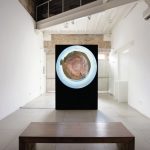
Anti-Horário
[Leandro Lima] [Gisela Motta]
Categories: [Animation & Video] -
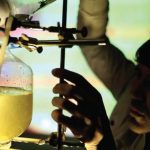
BioSoNot 1.2
[Gilberto Esparza]
Categories: [3D & Sculpture] -
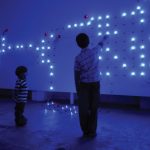
Dispersiones
[Leo Nuñez]
Categories: [Installation] -
![drumCircle[ ]](https://digitalartarchive.siggraph.org/wp-content/uploads/2018/04/2017_Oyarzun_drumCircle_Image02-150x150.jpg)
drumCircle[ ]
[Christian Oyarzún]
Categories: [Installation] -
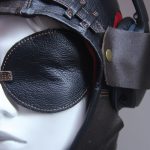
Echolocalizator
[Hamilton Mestizo]
Categories: [Augmented Reality/Virtual Reality] -
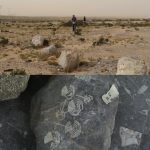
Imaginario Inverso
[Astrovandalistas]
Categories: [Installation] -

JailHead.com
[Rodolfo Peraza]
Categories: [Augmented Reality/Virtual Reality] -
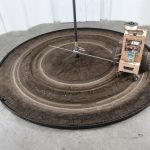
Milpa Polímera
[Marcela Armas] [Arcángelo Constantini]
Categories: [Performance] -

Octópodos Sisíficos
[Miguel Grassi] [Mariela Yeregui]
Categories: [Installation] -
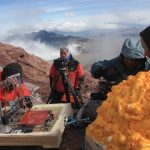
The Andean Pavilion
[Paul Rosero Contreras]
Categories: [3D & Sculpture]
Exhibition Writings and Presentations:
-
Title:
Autoencoding Blade Runner: Reconstructing Films with Artificial Neural Networks
Author(s):
Category: Paper
Abstract Summary:
In this paper, the authors explain how they created Blade Runner—Autoencoded, a film made by training an autoencoder—a type of generative neural network—to recreate frames from the film Blade Runner. The autoencoder is made to reinterpret every individual frame, reconstructing it based on its memory of the film. The result is a hazy, dreamlike version of the original film. The authors discuss how the project explores the aesthetic qualities of the disembodied gaze of the neural network and describe how the autoencoder is also capable of reinterpreting films it has not been trained on, transferring the visual style it has learned from watching Blade Runner (1982).
Title: Avoid Setup: Insights and Implications of Generative Cinema
Author(s):
Category: Paper
Abstract Summary:
Generative artists engage the poetic and expressive potentials of film playfully and efficiently, with explicit or implicit critique of cinema in a broader cultural context. This paper looks at the incentives, insights, and implications of generative cinema, which significantly expands the creative realm for artists working with film, but also incites critical assessment of the business-oriented algorithmic strategies in the film industry. The poetic divergence, technical fluency, and conceptual cogency of generative cinema successfully demonstrate that authorship evolves toward ever more abstract reflection and cognition which equally treat existing creative achievements as inspirations, sources of knowledge, and tools.
Title: Introduction to Unsettled Artifacts
Author(s):
Category: Essay
Abstract Summary:
The motivation for the 2017 Art Gallery was, in fact, not only to examine the current state of art, science, and technology, but also to return a sense of “agency” to these technological artifacts and to help us recognize that we all make the choices that create the future. Therefore, convinced of the power of the poetics of technological speculation, and with the intention of mapping the ground on which we can imagine alternative futures, the Art Gallery traveled south in order to exhibit works of art produced outside the traditional centers of industrial and technological development, by artists living and working in Latin America.
Title: Lenticular Waterwheels: Simultaneous Kinetic and Embedded Animation
Author(s):
Category: Paper
Abstract Summary:
After decades as a novelty, lenticular technology has resurfaced in compelling large-scale projects. Without any required energy, the medium offers stereography without glasses and frame animation without electronics. A kinetic artwork installed in a remote river in the French mountains broke from the technology’s previous restrictions of static and flat display, recalculated the print mathematics for a curved surface, and explored narrative structures for a moving image on a moving display. This paper documents how the sculpture used custom steel fabrication, site-specific energy, and revised lens calculation to present a previously unexplored hybrid of animation.
Title: The Interactive Image: A Media Archaeology Approach
Author(s):
Category: Paper
Abstract Summary:
This paper examines the history of the influential Interactive Image computer graphics showcase, which took place at museum and conference venues from 1987 to 1988. The authors present a preliminary exploration of the historical contexts that led to the creation of this exhibition by the Electronic Visualization Lab (EVL), which included the integrated efforts of both artists and computer scientists. In addition to providing historical details about this event, the authors introduce a media archaeology approach for examining the cultural and technological contexts in which this event is situated.
Title: Transforming the Commonplace through Machine Perception: Light Field Synthesis and Audio Feature Extraction in the Rover Project
Author(s):
Category: Paper
Abstract Summary:
Rover is a mechatronic imaging device inserted into quotidian space, transforming the sights and sounds of the everyday through its peculiar modes of machine perception. Using computational light field photography and machine listening, it creates a kind of cinema following the logic of dreams: suspended but mobile, familiar yet infinitely variable in detail. Rover draws on diverse traditions of robotic exploration, landscape and still-life depiction, and audio field recording to create a hybrid form between photography
and cinema. This paper describes the mechatronic, machine perception, and audio-visual synthesis techniques developed for the piece.




